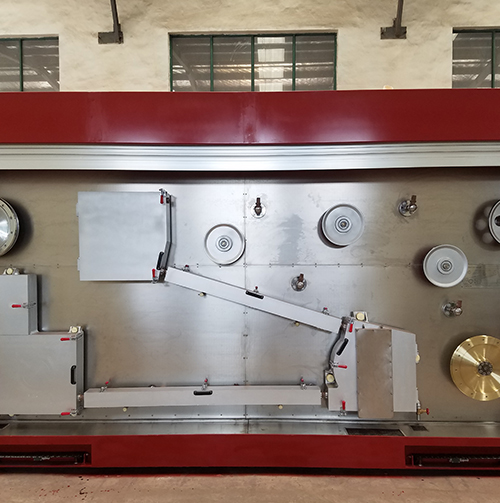Jiangsu Sufeng Machinery Technology Co., Ltd.
Contact person: Jin total 13813439188
Ligong 1396 1999728
Tel: 0515-88668006
Fax: 0515-88668488
Email: sufengkeji@126.com
Website: www.sufkj.com
Website: en.sufkj.com
Address: Hongxing Industrial Concentration Zone, Yifeng, Yancheng City, Jiangsu Province

Thorough quenching
Aim to optimize crystal, symmetrical mechanism, eliminate thermal stress and shortcomings of production, reduce strength, improve drilling production processing characteristics and cold plastic deformation ability.
It is used to optimize the robust overtemperature mechanism of medium and high carbon steel which has poor physical properties after forging, forging and welding. The temperature of martensite changes from 40 to 60 C when the steel is heated to metallographic structure. After a period of heat insulation and heat preservation, martensite changes again during the whole process of water cooling, which can only narrow the structure of steel.
Spheroidizing annealing
It is used to reduce the high toughness of alloy steel and bearing steel after forging. Temperature of steel parts is heated to about 30-50 C at the beginning of martensite formation. After heat insulation and heat preservation, water cooling is delayed. In the whole process of water cooling, the lamellar cementite in ferrite becomes spherical, which reduces the strength.
Isothermal annealing
It is used to reduce the high toughness of some alloy tool steels with high moisture content of nickel and chromium, so as to carry out drilling production and processing. Usually, water is cooled to the most unstable temperature of martensite at a rapid rate, and the martensite is changed into toxoplast or sorbite after a moderate time of heat insulation. The strength of martensite can only be reduced.
(4) Work hardening and quenching are used to remove the hardening of metal wires and sheets during the whole process of cold drawing and cold binding (strength increasing and plastic deformation decreasing). The heating temperature is usually 60 to 130 degrees below the temperature at which the steel first produces martensite, which can only remove the cold hardening effect and soften the metal material.
Quenching of high purity graphite
It is used to change pig iron with many carbides into malleable iron with good plastic deformation. The actual operation of the processing technology is to heat the casting up to or down 960 C. The heat insulation must be time after moderate water cooling, so that the cementite dissolves and produces flocculent high purity graphite.
External Diffusion Quenching
It is used to make the composition of aluminium alloy casting uniform and improve its performance index. Under the precondition of melting, the castings are heated to the highest possible temperature and insulated for a long time, and then cooled slowly after the external diffusion of various elements in the aluminium alloy tends to distribute jointly.
Stress relief annealing
It is used to remove the thermal stress of steel casting and welding parts. In view of the temperature of martensite produced in steel handicraft products just after heating, the following 150-150 degrees C. After heat insulation and heat preservation, water cooling in gas can only remove thermal stress.
Incomplete quenching
The heating temperature is in the middle of Ac1~Accm, and the water cooling rate is: when the temperature is 600~700 C, the carbon steel is 150~150 C/h, the carbon steel is 60~150 C/h, and the high alloy steel is 30~65 C/h, which is mainly used for hypereutectoid steel.
Welding down annealing
TIG welding experiments of YG30 tungsten steel and 46 steel were carried out using pure Fe as filling metal. The mechanical phase of YG30/weld interface before and after quenching was analyzed by sem. Repeatability. Industrial pure Fe is used as filling metal material. After quenching at 1050 ~C, the welded_phase will not change; after quenching at 1150 ~C, new_phase will be formed; _will increase with the increase of annealing temperature and insulation time. During quenching, the new_phase nucleates at the WC-gamma phase boundary, occupies the WC crystal and grows up, and spreads all over the boundary of WC particles.

 Consultation:13813439188
Consultation:13813439188 mailbox:sufengkeji@126.com
mailbox:sufengkeji@126.com add:Yifeng Hongxing Industrial Concentration...
add:Yifeng Hongxing Industrial Concentration... Tpl:0515-88668006
Tpl:0515-88668006 Website:www.sufkj.com
Website:www.sufkj.com 
Copyright@Jiangsu Sufeng Machinery Technology Co. Ltd.. Technical Support: SkyNet